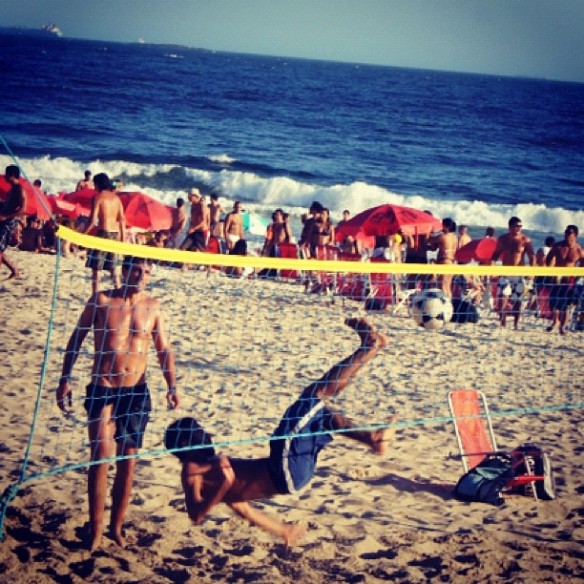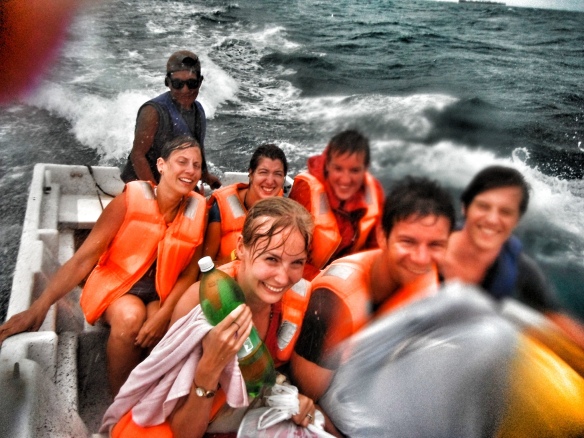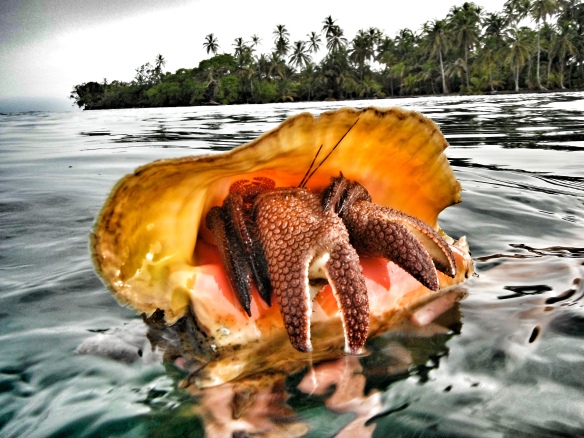Following on from my last post about the final weeks of my Latin American journey, I thought I’d quickly follow on from Chile to Argentina.
Many travellers rave about Argentina, they talk about the passion of the place and how much a backpacker can enjoy Argentina on a budget. Well right now, it isn’t. Let’s get that out the way straight away. As you may have seen in the news, Argentina is currently battling the onset of another financial crisis. Recently there have been strikers, protests, the nationalisation of a major oil company and a ban on the withdrawal of US Dollars from ATMs. Throw in some more fuss about the Falklands to try and dilute the bad news and you’re there or thereabouts.
As a backpacker, the main impact on us was the rate to withdraw pesos being artificially high and increasing the cost of everything to us. Anyone reading this before visiting Argentina might like to know that you can get more bang for your buck if you take in cash and exchange it on the black market for a 50% premium.
Like this blog, I didn’t warm immediately to Argentina either following a rather scenic final trip back over the Andes from Santiago to Mendoza – the next time I do a trip like this I want a car or a motorbike to take advantage of journeys like that. Alas, upon arriving at the bus station in Mendoza I set about task number one, find cash! With some spare Chilean Pesos, the tourist information kiosk seemed a sensible option to ask about a currency exchange. The result was a grumpy look from the woman behind it, a grunt followed by her returning to staring into space. Ho hum.
Next to search for an ATM which after a very long queue decided not to work with any of my bank cards. Great. Katrina however did manage to elicit some money from it, in huge denominations, which left us wanting some smaller change for the cab journey into town. Attempting to do this by purchasing something of low value like a Coke was utterly useless, one shopkeeper slamming on the counter, shouting something I couldn’t understand and putting the item back in the cooler. By this point I just assumed I’d got out the wrong side of the bed that morning. A feeling only reinforced by almost all the hotels and hostels in town having no vacancies.
Mendoza’s major attraction to backpackers is wine. Having decided to skip a wine tour it would have been rude not to do one in Argentina, especially being a country whose wine I knew virtually nothing about.

I probably learnt more Spanish than I did about wine on our tour, with it being taken almost exclusively by domestic tourists from Buenos Aires. Any tour was going to have a hard job living up to my last wine tasting experience in South Africa and that’s perhaps why I didn’t get into this one as much. Compared to Chilean reds I found Argentinian Malbecs less appetising, some of them even vinegary. Our final tour stop was situated next to an enormous oil refinery, now I’m not a sommelier but I think that impacts the terrior. Mmm….sulphur.
Moving on from Mendoza to Buenos Aires on board a rather plush yet ludicrously expensive bus. They seriously need to get Megabus out here when bus fares, albeit for 13 hours approach £100 each way. In the UK journeys of that length can be had from £1 up to about £50. Despite the comfy bus I still didn’t sleep thanks to a man who snored like a hippo with a cold. The relief upon reaching Buenos Aires was immeasurable.
Buenos Aires is a soulful city, something that I always talk about loving. There’s a kind of grungy, faded, hipster type scene to much of the city against a backdrop of European style architecture. It’s a port city with rougher, working class suburbs as well as wealthier areas like Palermo that have prospered from the trade. I liked it, another city to wander and take it all in.
The spirit of Evita still lives on in BA with a large iron cladding on a skyscraper looming over the massive main boulevard through the city, as well as her tomb at the impressive cemetery in leafy Palermo. Much of the time in the city I was whistling “Don’t Cry for me Argentina”.

This all completely contrasts with the areas of San Telmo and La Boca, more traditionally down to earth and working class neighbourhoods. With a cafe culture (albeit heavily tailored towards tourists), some cool antique markets and an interesting back drop makes for a really interesting place to explore. We took in some tango dancing in a square, some fairly mediocre and some incredible to watch. Despite being a bit of a cop out when it comes to dancing I kind of wanted to have a go, were it not for my ankle.

Moving into La Boca, a more working class neighbourhood than San Telmo (read rougher round the edges), my first thoughts were to head for La Bombonera – home of Boca Juniors. It really has the feel of an old fashioned football ground in the heartland of its supporters and had me wanting to go to a game but I’ll get to that.
Heading further into La Boca I was taken by the colourfully painted houses and the local pride in their area, something not so common in places like that in the UK. Past that and we came to another touristy area with more cafes, shops and tango before hitting the old harbour and checking out the Transporter Bridge, a bit like the one back home in Middlesbrough.

There is such a difference between the Palermo area of Buenos Aires compared to La Boca, and hence part of the reason for the big football rivalry. But the next day we felt like going posh again to take in one of Argentina’s most famous sports, Polo. Tally ho!

Wealthy British expats brought Polo to Buenos Aires in the late 19th Century and the game is still played today by wealthy Argentinians at the same members clubs as set up by the British. We took in a match at the Hurlingham Tournament, one of the big 3 events of the year at the club of the same name. Despite now understanding the rules, it was a fun new sport to watch with a rather different sort of person in attendance in comparison to anything else we’d see on our entire trip. High scoring, fast paced, with regular intervals it seemed something ice hockey or football fans could enjoy, albeit while rather well dressed and soaking in the gorgeous grounds of the club. Catching the commuter train back into BA afterwards did feel like a bit of a come down.
That said, Argentina does have the perfect evening pick me up. Steak. Really, really good steak! Whether it’s the quality of how the cows are raised, how the meat hung to mature or the way it’s cooked, I’m not really sure. What I do know is every time I had steak throughout Argentina it was incredible. Just a little tip for those like me who enjoy a nice bloody steak, you’ll need to emphasise ‘azul’ or ‘con sangre’ to the waiter, Argentinians often like a steak well cooked through. Sadly, I haven’t got a clue for the name of the place we liked best in BA – but it’s in San Telmo and you’ll get an huge steak with some delicious sides to compliment.
After wandering around La Boca a few days earlier and admiring La Bonbonera, the home of Boca Juniors, I wanted to catch a game. Football withdrawal symptoms were kicking in having only seen only match in months, back in Medellin.
There’s lots of stuff out there about watching a Boca Juniors game, which I read before we started our ticket mission. To cut a long story short, football violence in Argentina historically has been shocking and government efforts to curb this require clubs to control who can attend games. In the case of Boca, this has landed with their ‘football mafia’ – a collection of armed, wealthy and aggressive gangs who control ticketing, security and allegedly with threaten their own players and families should they perform poorly while receiving a cut of their salaries.
When it comes to actually purchasing the ticket for Boca, you can’t directly without a membership. This leaves two options as a tourist, pay an eyewateringly high fee of around $100 each to a tourist agency to attend in a group or purchase a ticket from a tout. So many conflicting things are said about these tickets so feeling a bit nervy we set off to the stadium early. A look around showed a few touts circling the stadium and after a little checking and negotiation picked up 2 tickets at a much lower cost than the tour. To confirm their authenticity, we even gave them to one of the mafia stewards to confirm and all seemed well.
Until we started waiting and waiting, to discover kick off to be two hours later than advertised. As the queue started to be allowed through the first security checkpoint, Katrina filtered through the shorter entrance for ladies with no issues. As I reached the front of my queue the steward took my ticket, mumbled ‘No’ and refused to acknowledge my presence no matter what I said. To the confusion of another steward who pointed out Katrina entered, the steward desired her ticket, took that too and no matter what was said I couldn’t get a word out of him. Irritated, we gave in, and can only speculate that the tickets many felt were authentic were fakes or the ‘mafia’ have a preference for tourists to be managed within authorised groups.
At this point, I just wanted to see a game and having bought an Arsenal di Sarandi shirt a few days previously back in Mendoza decided to take in their game at a nearby suburb. Arsenal in fact were the champions for the first half of the local season despite coming from relatively humble backgrounds and taking on title challengers for the second half of the season, Velez Sarsfield, also from Buenos Aires giving us a local derby.
The atmosphere couldn’t have been anymore different to Boca. The suburb of Sarandi is similarly working class but without any feeling of being on edge. Purchasing tickets here proved to be incredibly simple, seating or standing choice and girls go half price. Great idea!
After a quick choripan (sausage sandwich) we entered the stadium where fanaticos were dancing on banners hung upon the standing barriers. From the full to capacity Velez end came a mighty roar giving this a real football feeling. Arsenal fans took a more laid back approach, probably an effect of the intensive odour of marijuana filling the vicinity! That was probably for the best as during the game, despite their team playing the nicer football, suffered catastrophically in defence as they crumbled to a 5-1 home defeat. With the goalkeeping, defending, manager being sent to the stands and louder away support it was much like their more famous namesakes in London!
And that pretty much brought BA to a close for us before heading north towards Iguacu Falls with stops along the way into Uruguay and Paraguay but more on those next time.


























































































